Main content
Extremes: What to expect
By Theo Webb, producer and director for Extremes

Hang son Doong, Vietnam, one of the largest caves on Earth. It is a portal to an extreme world, two hundred metres deep underground. Plants can only survive in this spot because light streams through a hole in the cave roof. Travel deeper and you enter a world of complete darkness, where no plants can grow but where, remarkably, life can be found. To film this extraordinary place, the team worked and camped for 18 days underground, longer than anyone else has spent in this cave.
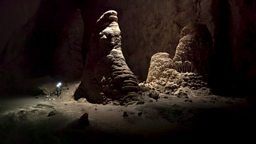
Specialist filming lights unveil a cave full of wonders from the perpetual darkness. Giant stalagmites over twenty metres high, tower over human explorers. These monoliths are formed by water drops seeping through cracks in the rock and precipitating minerals onto one spot over the course of millennia. There are not just stalagmites here. There are cave pearls the size of tennis balls and vast passages large enough to accommodate a jumbo jet. Lighting the cave was crucial to the crew’s success. To reveal the scale and wonder of the immense cave structures they devised the ‘drone dance’ to light and film using two drones flying simultaneously.
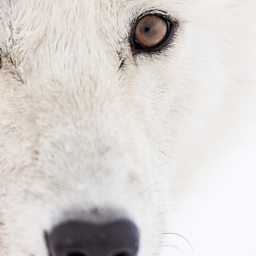
On the surface, arguably the most hostile conditions found on planet Earth are at the poles. On Ellesmere Island, Canada, a pack of Arctic wolves must make the most of a short summer to rebuild their strength after months of winter darkness and temperatures dropping to -50C. But simply to find their prey means travelling for miles each day and one located, hunting their Ice Age foes takes remarkable persistence and tactics. For the crew, travelling up to 50 miles per day on all-terrain-vehicles was a bone-rattling experience and meant constant vigilance to avoid cavernous pot holes and gaps in the tundra.
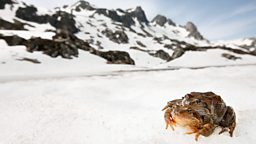
A pair of European common frogs in a mating embrace on the snowy slopes of the French Alps. After months sheltering under the ice from winter, dozens of frogs are waking up in the Spring sunshine and racing to the nearby breeding pool in the hope of finding a mate. This pair will soon splash back into the pool where they will have to avoid amorous males before being able to lay spawn in peace.

Barbary macaques huddle for survival in the brutal winter of the Atlas Mountains. Research has shown that the more social the monkey, the more likely it is to survive these freezing conditions. Even so, in some years half the group can perish from the extreme winter cold.
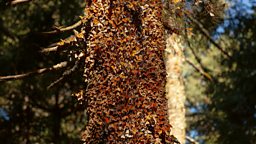
In the alpine forests of Mexico, monarch butterflies, in their millions, huddle in the tree canopy. A thin layer of warm air, trapped by the trees, keeps them at just the right temperature and protects them from night time frosts which can be fatal. The butterflies can wake from their slumber at the slightest disturbance and so the crew had to walk around the forest in their socks and whisper so as to keep noise to an absolute minimum.
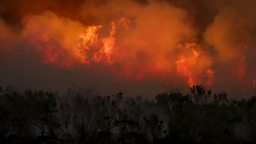
Fire, one of the most destructive and unpredictable extremes. Here in South Africa’s fynbos, fires rip through one of the most botanically diverse places on Earth once every two decades, reducing the vegetation to ashes. Yet, this destruction brings new life as seeds and bulbs erupt from the ground and bring a green flush to the regenerated landscape.
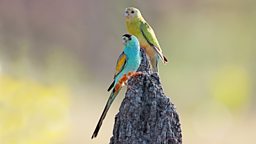
A pair of golden-shouldered parrots sit atop a termite mound in which they have dug a small tunnel and chamber to be their nest site. Not only do the thick walls of the termite mound protect the chicks from the scorching sun but also predators. There is one further benefit of this extraordinary nesting strategy… but you will have to tune in to find out what!

African elephants make their way across the dusty plains of Amboseli national park. Once lush with grass, the whole region has been ravaged by extreme weather and drought. This combined with pressure from overgrazing has meant that the ecosystem is severely stressed and the elephants are finding it hard to find enough food and water. Some families are adapting to these changes but others face tragedy in the face of such huge environmental challenges.

Snow leopard cubs play around a waterhole in the Gobi desert, Mongolia. Despite the changes happening to Earth’s Extreme habitats, there are still wilderness areas that offer great hope. To capture these remarkable images of the snow leopard family, twenty-four camera traps were deployed for around 8,000 hours across several big cat territories. Fortunately the mother of these cubs left them to play around this waterhole on a couple of occasions whilst she went off to hunt, allowing us a privileged glimpse into the lives of these rarely seen cats.
